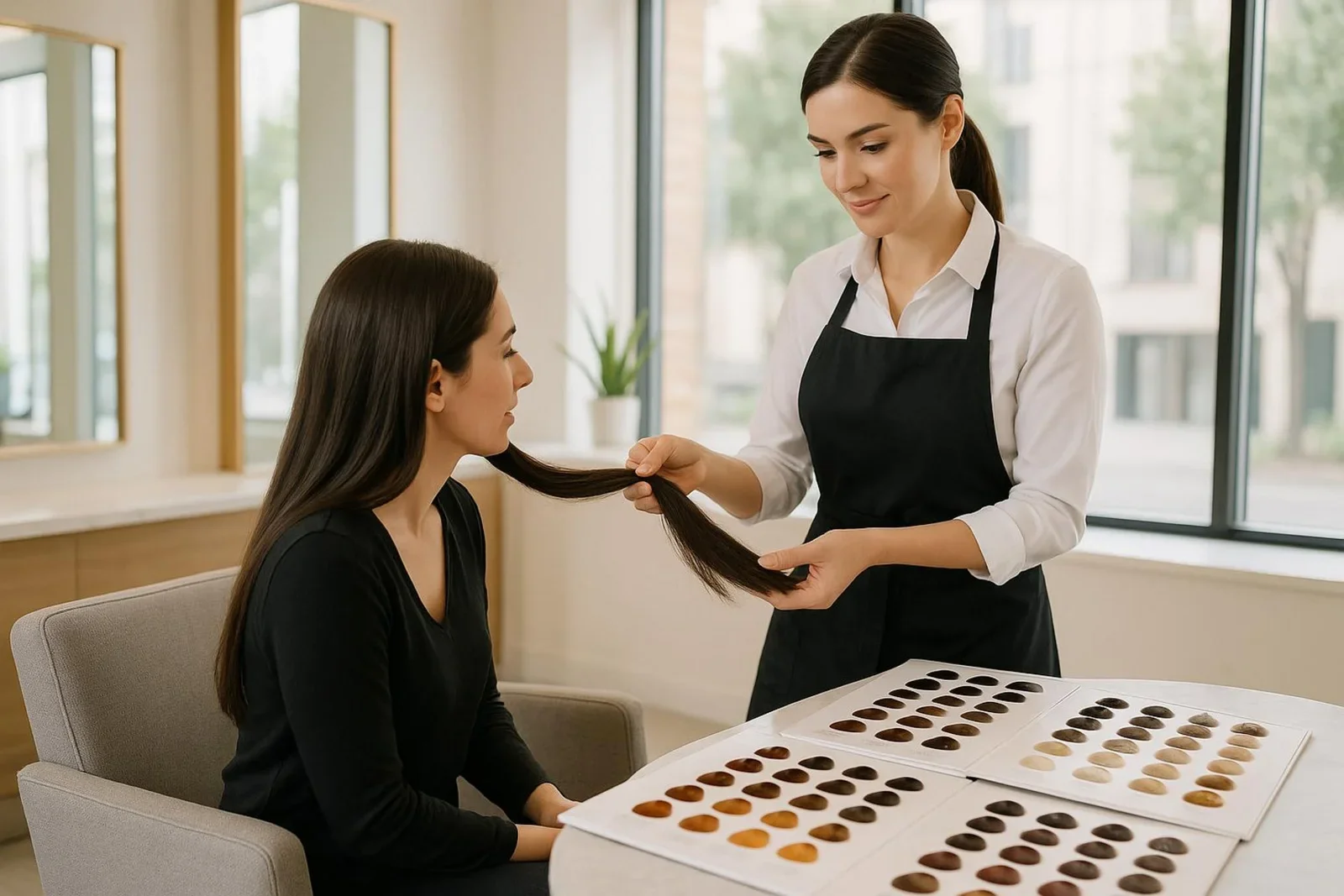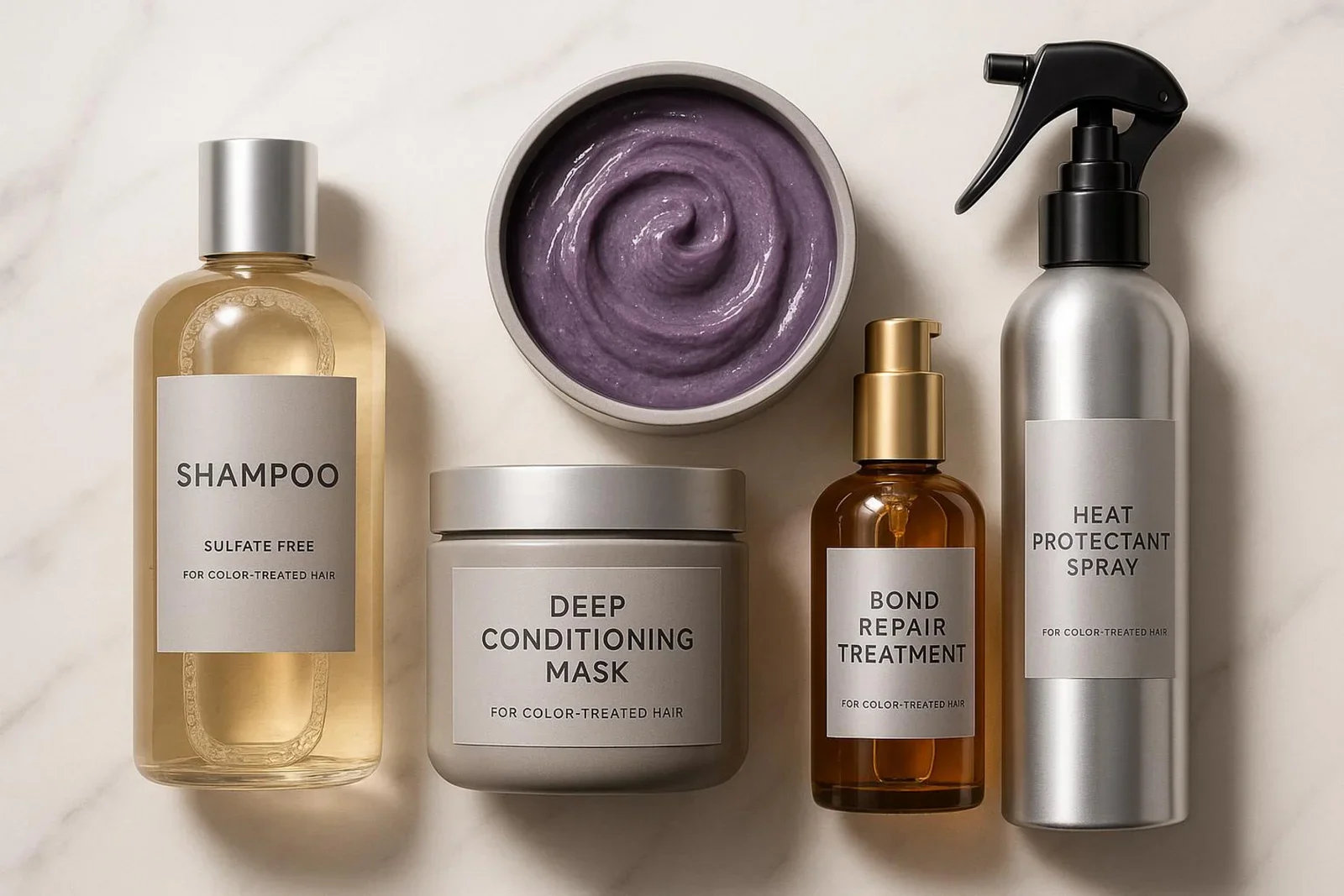How to Change Hair Colors Safely
Changing your hair color can be a fun and exciting way to refresh your look. Whether you're thinking about going lighter, picking a deeper tone, or trying out a bold new shade, modern hair dye and following the right steps can help you get the results you want without harming your hair. With some planning, patience, and the right hair care routine, you can keep your hair healthy and vibrant through the whole process. This guide explains step-by-step how to switch hair colors safely, so your hair stays strong and looks its best from start to finish.
Why Switching Hair Colors Safely Is Important
Changing your hair color is not just about looks-it has a big effect on your hair’s health. Trying to rush or using the wrong products can cause a range of problems, from dryness to breakage. Know the risks and understand why a gentle, careful approach helps keep your color transformation healthy and smooth.
What Happens If You Change Hair Color Too Fast?
Going too quickly, especially from dark to light, can push your hair beyond its limit. Lighter colors often involve bleaching, which removes natural moisture and protein from your hair. Even though dyes are safer now, too much bleach or dye still makes hair dry, brittle, and easy to break. Doing color treatments back-to-back worsens the problem, making hair feel rough and even causing uneven color, like patchiness or brassiness, that doesn’t match what you wanted.
Why a Slow Approach Works Best
Slowly changing your color is much safer for your hair. If you lighten your hair gradually over a few appointments, you avoid sudden damage and give your hair time to recover. Doing the same when making your hair darker helps prevent too much color build-up. Your colorist can check your progress at each step and make adjustments if needed, so your color comes out better and your hair stays healthier. You’ll save yourself from needing repairs later and avoid the cost and stress of fixing badly damaged hair.
What to Think About Before You Change Hair Color
Before you pick a new color, there are a few things you should check that will help your color change go smoothly and keep your hair strong. Think of these steps as your checklist before you start your hair color journey.
Check Your Hair’s Current Condition
Your hair's health is very important. Ask yourself: Is your hair dry, snapping, or damaged from previous coloring or bleaching? If it is, more chemicals can bring even more trouble. A good hairdresser will look at your hair's texture, how stretchy it is, and general condition before moving forward. Sometimes, you'll need a few conditioning treatments before starting to color. Healthy hair responds better to new color and keeps its shine and strength.
Think About Your Hair Type and Past Color Use
Different types of hair handle color differently. Thin, fine, or curly hair can get damaged more easily, especially with bleach. If your hair has been dyed a lot before, or if you’ve used henna, changing color can get tricky. Henna can react with other dyes, sometimes with unexpected results. Be open and honest with your stylist about your hair’s background so they can work out what will be safest and most effective for you.
Choose a Realistic New Shade
Before you get attached to a photo you’ve seen online, set realistic goals. Big color changes-like going from very dark to blonde-usually need more than one salon visit and can take time. Your natural color, how your hair holds tone, and any previous dye jobs make a difference in what’s possible. Let your stylist guide you so you both agree on a shade that works with your hair's needs and will look good without causing a lot of damage.
Best Ways to Switch Hair Colors
Once you know your hair’s health, set realistic goals, and understand your needs, you can look at different methods for changing your color. The right option will depend on your current color and what you want to achieve.
Lightening or Darkening Gradually
The safest way to change color, especially when going lighter, is to go step by step. Lifting color in stages gives your hair breaks between chemicals and lowers the chance of big problems. The same is true for going darker-gradually adding deeper shades is easier on your hair and looks more natural. See the example below:
| Current Color | Desired Color | Suggested Approach |
|---|---|---|
| Dark Brown | Platinum Blonde | Multiple lightening sessions; tone between steps |
| Light Blonde | Rich Chocolate Brown | Build darker color in layers to avoid harsh lines |
Blending with Highlights, Balayage, or Lowlights
Blending methods-like highlights, balayage, or lowlights-soften the change between old and new colors. Adding highlights or balayage gives a gradual, natural look, and lowlights can blend out old highlights as your hair grows. These techniques are good for when you want your new color to blend in over time and can reduce the need for frequent touch-ups.
When to Use Color Remover or Bleach
Color removers and bleach are strong tools and should be used carefully, usually by a professional. Color removers strip out dye but don't affect your hair’s natural color, so they can leave odd tones sometimes. Bleach is needed to lighten natural color, especially for big changes. Bleach always causes some damage-even with protective products-so an experienced colorist will decide if your hair can handle it and choose the mildest product possible.
Salon vs. At-Home Color Changes
Trying dramatic color changes at home, especially with box dye, can go wrong and damage your hair. Box dyes are meant to work for anyone, but don’t account for your hair’s unique state, leading to patchy, odd results. Professional stylists have better quality products, training, and can create custom formulas for your hair’s needs. They also know how to fix mistakes. For major changes, going to a salon is almost always the best option.
How to Reduce Damage During Color Changes
Even with the best care and professional help, dyeing hair always puts some strain on it. Here’s how to protect your hair and keep it as healthy as possible while changing colors.
Use Good Products and Treatments
The right products matter a lot. Cheaper dyes and shampoos can take away moisture and protein, causing your hair to break. Professional-quality, ammonia- and sulfate-free options are much gentler. Look for hair care with amino acids and oils-they help repair and protect colored hair. Always use deep conditioners regularly, especially if you’re lightening your hair.
Balance Protein and Moisture
Coloring breaks down the protein bonds in your hair, so you need to rebuild them. Too much protein, though, can make hair stiff. The trick is to swap between protein-rich products and heavy moisturizers. This keeps your hair strong and flexible.
Always Do Strand and Patch Tests
Before using a new dye, check for reactions by testing a small patch of skin (usually behind the ear or on your arm) at least 48 hours before coloring. For strand tests, apply the dye to a hidden section of hair to see how it reacts and what shade you’ll get. These simple steps prevent surprises and catch possible allergies early.
Wait Between Color Sessions
Spacing out color appointments is important. Too much coloring too often can really weaken hair. Wait at least eight weeks between full head coloring or four weeks for bleach jobs. Use this break to give your hair lots of moisture and repair so it’s ready for the next round of coloring.
How to Care for Hair Between Color Changes
Looking after colored hair at home is key for keeping it healthy and making your new color last longer. Basic care habits can make a big difference.
Washing and Conditioning Tips
Wash hair less often-about every two to three days.
Use sulfate-free and color-safe shampoos and conditioners.
Wash hair with lukewarm, not hot, water to keep color from fading.
Try co-washing (washing with conditioner only) for gentle refreshes.
Use Less Heat Styling
Try to avoid straighteners, curlers, and blow dryers as much as possible.
When you use heat, always use a heat protectant spray or serum.
Let hair air-dry or use heatless styling options to prevent further damage.
Bond Repair and Strengthening Treatments
Bond-building products, like those with Olaplex or similar ingredients, help fix the inside structure of hair damaged by dyeing. Use these weekly or bi-weekly to keep hair strong and reduce split ends and future breakage.
Common Hair Color Mistakes to Avoid
Many people run into trouble when changing hair colors. Here are some frequent mistakes and how to avoid them:
Overlapping Color on Already Treated Hair: Don’t apply bleach or dye over hair that’s already been treated, as this weakens and damages the strands. Only apply color to new growth unless your stylist advises otherwise.
Using Box Dye for Big Changes: Box dyes don’t account for your hair’s unique needs and can leave you with uneven color or more damage, especially for major color changes.
Skipping Hair Care: Coloring hair removes nutrients, and not using conditioners or treatments afterward can make hair dull and weak over time. Always keep up with hair care between coloring sessions.
Tips from Professionals for a Safe and Smooth Color Change
Changing hair color can be a long-term process, but there are steps you can take to help things go smoothly and avoid setbacks:
Get Advice from a Professional: Seeing a stylist is the best way to guarantee safe, even results. They’ll check your hair’s health, plan the change, and use the safest coloring methods for you.
Prep and Maintain Your Color: Don’t shampoo right before your appointment. Natural oils protect your scalp. After coloring, always use sulfate-free products and follow your colorist’s care tips. Purple shampoos help keep blonde shades cool, while blue shampoos can neutralize orange in brown hair. Sleeping on a silk pillowcase is also gentle on colored hair.
Frequently Asked Questions about Safe Hair Color Changes
How often can I dye my hair without damaging it?
It depends on the type of dye and your hair’s health. For permanent color, wait about eight weeks before redoing the whole head. Root touch-ups can be done every 4-6 weeks since they only cover new hair. Semi-permanent colors can be used more often since they cause less damage and wash out in a few washes.
Is it safe to go from dark to light in one session?
No, it’s not safe to go from very dark to very light in one salon visit. This usually takes multiple bleaching sessions, with time between each one, to protect your hair’s health. Trying to do it all at once can lead to extreme dryness, breakage, or even hair loss.
What should I do if my hair feels damaged midway through changing colors?
If your hair starts to break, feel stretchy, or look very dry while switching colors, stop all coloring and focus on recovery. Use deep conditioners, bond-repair treatments (like Olaplex), and gentle cleansers. Avoid heat. Get a trim to remove split ends, and see a professional for more help before attempting another color change.
Do you live in Sydney?
Get the perfect look at our salon – schedule your appointment now!
Our Services
Check Out Our Instagram
Check out our instagram
Check out our instagram and see our latest posts!
Check out our facebook
Check out our facebook and see our latest
posts!










